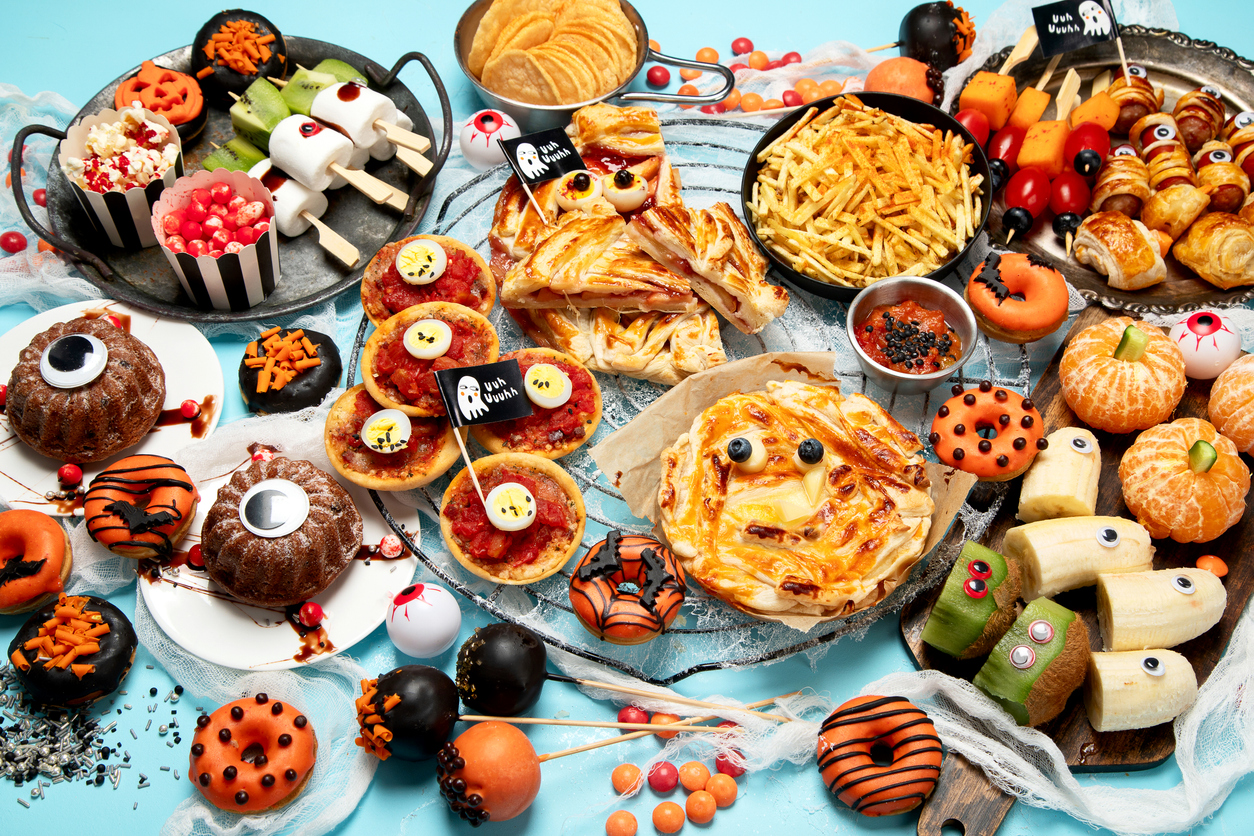From Halloween to the Superbowl, the temptation to over-indulge is high
Americans are about to enter the food and party marathon.
Kansas State University family and consumer sciences specialist Sharolyn Jackson said Halloween kicks off a more than three-month span – ending with the Superbowl – in which the temptation to over-indulge is high.
“We are constantly making food decisions and we don’t always have control of those decisions,” Jackson said. “Sometimes people that we work with bring foods in that tempt us and we aren’t prepared for. We have events and dinners and parties and we don’t always know what type of food will be served, so it’s hard to plan ahead.”
Listen to an interview by Jeff Wichman with Sharolyn Jackson on the weekly radio show, Sound Living
Jackson notes that, on average, Americans gain one to two pounds during the holidays, though some may gain five times that much.
“That in itself is concerning, but also they’re not losing that weight after the holidays,” she said. “It just accumulates year after year, and over time, that has a real negative effect.”
Jackson said there are three keys to staying healthy through the marathon:
- Plan to stay active. Find time for physical activity, even if you aren’t able to do as much as previously.
- Plan for what you’re going to eat. Make healthy choices, but enjoy your favorite holiday foods, as well.
- Plan to stick to your regular sleep routine. Go to bed at the same time and get up at the same time.
All three, she said, are equally important.
“Physical activity is something that you need to put in your schedule so that it’s more apt to happen,” she said. “It doesn’t have to be the same type of physical activity routine that you have the rest of the year. Maybe it’s for a shorter amount of time, but make sure you are not getting out of the habit.”
One idea is to incorporate walking with shopping: “Do five laps inside the mall or down the block before doing your shopping; maybe do some window shopping while you walk around. Or, check out what stores are there.”
In addition to cardiovascular strength, Jackson said walking or other similar activity helps to reduce stress often associated with the harried pace of the holidays.
As for holiday parties and dinners, Jackson said “we all struggle with those.”
“Make a plan before you go. Maybe you will start with fresh vegetables or things that are lower in calories. Go for the non-calorie beverages first, such as water, iced tea or even diet soda.”
Jackson also suggested taking a smaller plate, especially in buffet lines, that encourages taking less food. Take a look at what’s on the buffet before you starting filling your plate so you can plan your plate accordingly.
“And eat slowly,” Jackson said. “Often times we’re so geared up and wanting to eat fast. Try to savor each bite. Before you go back for seconds, wait 10 minutes so that your stomach has a chance to signal to your brain that you are full, if indeed you are.”
There’s no need to completely skip desserts, she adds, but be realistic. “Think about smaller portions. Share a piece of pie with someone else. Learn to accept smaller portions.”
Jackson said healthy eating can also be guided by what has been called the ‘enjoyment curve.’
“It’s not research-based, but it makes really good sense to me,” she said. “There’s a point where we just keep eating and eating because it just tastes so good and we’re enjoying it. Then there’s a point where we’ve just gone too far. We’ve pushed that enjoyment curve to where it’s not enjoyable any more, and in fact you might be miserable.
“Think about eating your meals based on the enjoyment curve and stop when it’s no longer enjoyable. That is a strategy that can help people to not over-do it.”
More information on food and nutrition is available online from K-State Research and Extension.




